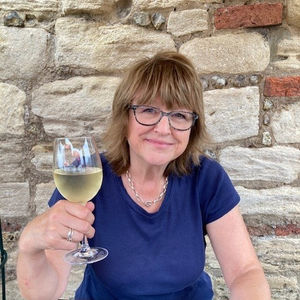
This year we are celebrating the fiftieth birthday of Diss Museum.
The story began in 1959 with a bequest from a Diss jeweller, George Moss. He left £1000 in his will for the setting up of a town museum. This generous bequest, worth about £30,000 these days, was not enough to buy and equip a museum. But it was seed funding, and the challenge was taken up by the local community.
Fundraising and starting from scratch with exhibits took time. A building was chosen in the centre of the marketplace, in an old butcher's shop. The address, The Shambles, reflects the building’s location in the town's former meat market.
Two trustees, Miss Barbara Easto and Mr Herbert Flatman, set up window displays to remind residents that a museum would open one day. There were problems: the interior of the old shop was a single rather shabby room, and who was going to look after the exhibits when the museum opened?
Luckily the local newspaper, the Diss Express, came to the rescue. The paper was located rather anonymously above the Fine-fare supermarket in Mere Street. People had to traipse up a narrow staircase if they needed to place adverts or editorial. Their rival paper, the South Norfolk News, had a nice front office in the town centre.
The Diss Express paid for The Shambles to be renovated and redecorated. They also provided a receptionist, Angela Tooth (Angie). Her job was to be the public face of the paper, dealing with editorial and advertising while keeping an eye on exhibits as varied as 19th-century leg shackles and lace-making materials.
The museum’s opening on 7 October 1975 was a memorable occasion – not just for the town, but for Angie too, as it happened to fall on her 21st birthday. Three days later, the local newspaper marked the event, referring to her as “Diss Express Girl Angela”. At the time, it was still common for women to be described as ‘girls’ well into their thirties.
Angie, who lives in North Norfolk now, has fond memories of her museum days:
“I loved working in the museum because I've always been interested in local history. The windows were clear of boards then, so the interior it was light and bright, and I found the exhibits very interesting. Most museum visitors behaved well, although I had to tell one man off who was roughly handing a fragile animal bone. There was only one cabinet at that time, and some other items on shelves.
“As well as the regular customers, there were some old boys who liked to come in for a chat, but I didn't mind that – I've always liked chatting to people.
“My job was to take advertisements including obituaries and in memorium messages, along with editorial information.
“I moved away from Diss a long time ago and am now living very happily in North Norfolk, but I still meet up with some of my old newspaper colleagues."
The collection continued to grow, and in the early 1990s the museum expanded into the neighbouring florist's shop, and for a while it was run by the town council.
The museum's first curator, Tim Holt-Wilson, later wrote in the Diss Express: "The tiny Shambles building became a place where the town was especially aware of its past. It contained old things to do with Diss – objects on shelves and under glass, snapshots of past life – things to marvel at, to rouse one's curiosity, things loaned or given to the museum to start a collection with, precious as part of the lives of the people who put them there."
These days the museum is a registered charity run by volunteer stewards and trustees. It is still only two rooms – small but beautiful. We have a brand-new website this year and more than 6,000 exhibits in our stores.
Diss Museum
Below is a selection of photographs. Click on the individual pictures to find out more about each one.

